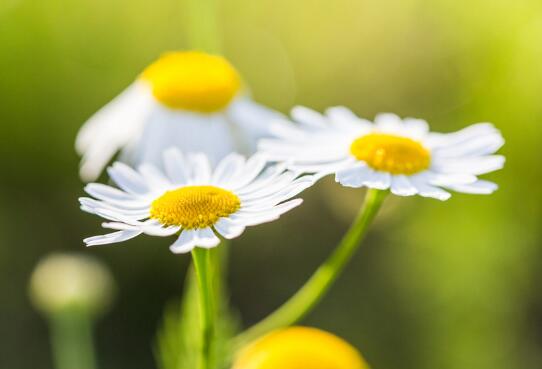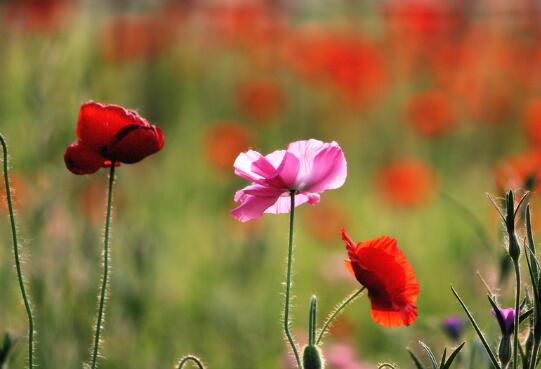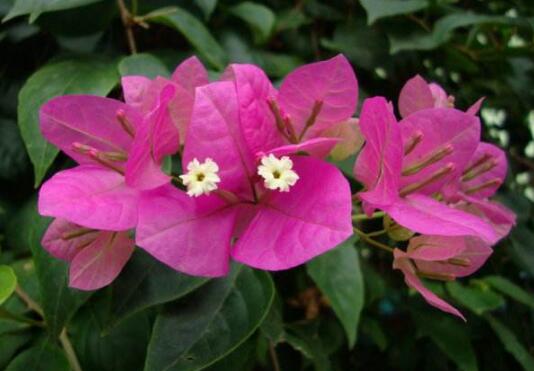What to do with the growing insects of white chrysanthemum? pest control of white chrysanthemum / 2 insect pests and 3 diseases
In the growth process of Chrysanthemum morifolium, the last thing we want to encounter is diseases and insect pests. This kind of problem is very harmful to the plant, which will not only affect its beautiful plant shape, but also lead to plant death if it is not treated in time. So what should I do if the white chrysanthemum grows worms? What do you need to do to prevent and control diseases and insect pests of Baijing chrysanthemum? Next, the editor will take you to learn about it.
First, what to do when the white chrysanthemum grows? find the reason.

If you want to know what to do with the white chrysanthemum worm, we must first understand what kind of worm it is, so that we can deal with it pertinently, because the treatment of each kind of diseases and insect pests is different, and the details are described in detail below. Friends who are troubled in this respect can learn about it.
II. Pest control of Chrysanthemum morifolium
1. Aphids
Aphids are a kind of pest in many plants, and white chrysanthemum is no exception. It is a plant-eating insect, which mainly harms the leaves and stems of white crystal chrysanthemum. It will gradually absorb the juice, resulting in a large loss of nutrients in the plant. With the passage of time, it will also cause the plant to gradually wither and die.
Control method: when we deal with the diseases and insect pests of this kind of white crystal chrysanthemum, if the number of pests is relatively small, we can prune the damaged branches and disinfect the plants. If the quantity is large, we can directly use 3000 times of 50% aldicarb wettable powder to spray directly.
two。 Grub
Grub is a kind of underground pest, its high incidence period is from June to September every year, so we should pay special attention to this pest. This pest mainly bites on the root of chrysanthemum, mainly occurs in the seedling stage, and in serious cases, it will lead to the death of the whole plant.
Control method: for the disease and insect pest of this white chrysanthemum, we can directly use 80% trichlorfon soluble powder and 25% carbaryl wettable powder 800 times each to fill the root, so that it can be killed.
3. Leaf spot disease
Leaf spot is a common plant disease, its high incidence period is generally in spring and autumn, when the disease occurs, many oval brown disease spots will appear on the leaves of Chrysanthemum morifolium, and with the passage of time, the disease spot will gradually spread, and the color will slowly become darker. Finally, the plant can not carry out photosynthesis and die.
Control method: for this kind of white chrysanthemum disease and insect pest, we can use 20% silazole ·prochloraz 1000 times liquid to spray the diseased plant, usually spray once every 7-10 days, and then recover after 2-3 times.
4. Rust disease
Rust is a kind of disease caused by fungi, which mainly harms the leaves, stems and fruits of Chrysanthemum morifolium. Many different color blister spots will appear in the affected parts at the time of the disease, and will gradually spread over time. When the blister spots are dense into pieces, the plant will also die quickly due to the evaporation of a large amount of water in the body.
Prevention and control methods: for rust, which is a pest of white chrysanthemum, we can use 3000 times of WP to control rust, which is usually sprayed once every 7-12 days, and can be cured after 1-2 times.
5. Fusarium wilt
Fusarium wilt is a disease caused by fungi, the pathogen generally invades from the root wound, and gradually spreads with the passage of the event, generally from morbidity to death, the course of disease is generally 15-45 days, is a very harmful disease.
Prevention and control methods: when we aim at the diseases and insect pests of this kind of white chrysanthemum, we can use carbendazim or benzoate 800-1000 times to irrigate the roots of white crystal chrysanthemum, usually once a week, 5-6 times later can be cured.
What to do when the golden chrysanthemum grows bugs? pest control of golden chrysanthemum / 3 insect pests and 2 diseases
In the process of breeding golden chrysanthemum, the last thing we want to encounter is diseases and insect pests, this kind of problem is very harmful to the plant, which will not only affect the ornamental, but also cause the plant to die, so what should we do if the golden chrysanthemum grows bugs? How to prevent and control diseases and insect pests of golden chrysanthemum? Next, the editor will take you to learn about it.
First, what if the golden chrysanthemum grows bugs? find the reason.
If you want to know what to do with golden chrysanthemum worms, first of all, we have to understand what kind of insects grow, so that we can deal with them pertinently, because the treatment methods of each kind of diseases and insect pests are different, and the details are described in detail below. Friends who are troubled in this respect can learn about it.
II. Pest control of golden chrysanthemum
Longicorn beetle
Longicorn beetles are polyphagous insects of the family Cerambycidae. Its harm to golden chrysanthemum is the strongest in the larval stage, and the larvae will gradually look at the plant, thus hindering the normal growth of the plant, reducing the yield, weakening the tree potential and shortening the lifespan. When the damage is serious, it will lead to rapid withering and death of the plant.
Control method: for this golden chrysanthemum disease and insect pest, we can use 80% dichlorvos EC to inject into the injured punch, and then seal the punch with yellow mud to kill the pest at once.
Red spider
Among the diseases and insect pests of golden chrysanthemum, red spider is a relatively common one, and its high incidence period is in the summer every year, so at this time we must pay special attention to the fact that when this kind of pest occurs, the leaves of the plant will gradually turn yellow and whiten. If it is not treated for a long time, it will also lead to the phenomenon of plant wilting.
Control method: when we deal with the pest of red spider, we can directly use 40% diclofenac EC 1000-1500 times to spray, generally three times in a row can completely kill this pest.
Grub
Grub is a kind of underground pest, its high incidence period is from June to September every year, so we should pay special attention to this pest. This pest mainly bites on the rhizome of Chrysanthemum morifolium, which mainly occurs in the seedling stage, and in serious cases, it will lead to the death of the whole plant.
Control method: for the diseases and insect pests of this golden chrysanthemum, we can directly use 80% trichlorfon soluble powder and 25% carbaryl wettable powder 800 times each to fill the root, so that it can be killed.
Cataplexy
This is a symptom of sudden collapse caused by Rhizoctonia solani, with brown mildew attached to the disease. Mildew can extend from the basin soil to the plant. If you look closely, you can see that this is due to the mildew from the rhizome of the plant. Standing withered silk is often reddish brown in color and looks like a spider web.
Control methods: the quenching disease caused by Rhizoctonia solani can be controlled by spraying different fungicides, most of which are irrigated by soil.
Grey mold disease
Botrytis cinerea is a disease caused by fungi, which is a common disease in the prevention and control of diseases and insect pests of golden chrysanthemum. It mainly harms the fruit of golden chrysanthemum, and a gray-white mildew layer appears on the skin of the fruit during the disease. with the passage of the event, the mold layer will gradually spread to the whole plant, and finally lead to the phenomenon of rot of golden chrysanthemum.
Prevention and treatment: when dealing with Botrytis cinerea, we can spray the diseased plants with 1000-1500 times dilution of isobarbazide, usually once every 5-7 days, and then recover after 2-3 times.
How to prevent and control the diseases and insect pests that should be paid attention to in raising white crystal chrysanthemum
Baijingju likes a warm, humid and sunny environment, so it is a relatively strong plant. But we should always be careful not to be affected by diseases and insect pests. What the editor wants to share with you today is how to control diseases and insect pests that should be paid attention to in raising white chrysanthemum.
Main diseases
The main results are as follows: 1. Leaf spot disease: the pathogens are wild chrysanthemum and chrysanthemum, which can occur all the year round, especially in the warm and wet season from May to October. Control method: ① cleans up withered branches and residual leaves, removes diseased leaves in time, and centrally burns them. At the initial stage of the onset of ②, 70% methyl topiramate was sprayed with 800ml 1000-fold solution, and during the onset of the disease, 50% carbendazim or 75% chlorothalonil 800Mel 1000-fold solution was sprayed alternately, and 3 Mel was sprayed 4 times every 7 days.
2. Rust: the pathogen is chrysanthemum stalk rust, which is more serious in the rainy season from April to May and rainy weather at the end of autumn. Prevention and treatment methods: ① timely removal of diseased plants, removal of diseased leaves, concentrated burning. Before the onset of ②, it was sprayed regularly with 80% Daimen zinc 500 Mel 700 times solution; during the onset of the disease, it was sprayed with 15% Fenruoning 800 Mel 1000 times or 25% Fenrong Ning 1200 Mel 1500 times, and 3 Mel was sprayed 4 times every 7 mi 10 days.
3. Fusarium wilt: the pathogen is Fusarium oxysporum, which is more serious in high temperature and heavy rain in summer. Prevention and treatment methods: ① cleared the diseased plants in time and burned them centrally. During the onset of ②, 50% Dysenamine emulsion was sprayed alternately, or 50% carbendazim 400x or 75% Chlorothalonil 700Mel 1000 times alternately, and 3 Mel was sprayed 4 times every 7 days.
Major insect pests
1. Aphids occur all year round, with two breeding peaks from April to May and from September to October. Control method: check the top of the plant, the bottom of the bud and the petals, and find that the aphids are sprayed in the evening with 10% imidacloprid wettable powder or a clean emulsion 1000Mel 15000 times.
2. Pieris rapae (White Powder Butterfly): larvae are harmed from April to October every year, but it is the most serious in summer and autumn. The larvae feed exclusively on the terminal buds or shoots of the plant. Control methods: check the plants frequently and spray them in the evening with 1000 times of fipronil or 1000mi 1500 times of Regent suspension when pests are found.
3. Inchworm (geometrid moth): it occurs during the growth period, and the larval peak occurs in the first and middle of August, which feeds exclusively on leaves, buds and petals. Control method: check the value plants frequently and spray them in the evening with 21% 1000 times solution or 1.8% avermectin 1500 × 2000 times solution.
4. Grub: the larvae were damaged from late May to November, especially from June to September. Underground pests, larvae bite chrysanthemum rhizome, mainly occurred in the seedling stage. Control methods: check plants frequently and find pests with phoxim emulsion 300ml mixed with fine sand 25~30kg per mu in time, and spread border surface in the evening.
Do you know how to control the diseases and insect pests that you should pay attention to when you raise the white chrysanthemum? I hope you will pay attention to precautions when planting white chrysanthemum.
- Prev

What about the insects growing on Yu Mei, the pest control of Yu Mei / 2 insect pests and 2 diseases
In the growth process of Yu Mei, the last thing we want to encounter is diseases and insect pests, this kind of problem is very harmful to it, which will not only affect its ornamental, but also lead to plant death. What about the worms growing on the beauty of Yu? What needs to be done in the prevention and control of diseases and insect pests in Yu Mei?
- Next

How to cut light leaves, light leaves cutting method/spring sowing survival rate is high
Bougainvillea glabra is a common flower plant in people's life. It has a high ornamental value and is cultivated in various regions. With the breeding of more people, on its reproductive aspects of the problem also let people more concerned, its reproductive methods are generally based on cuttage propagation
Related
- Fuxing push coffee new agricultural production and marketing class: lack of small-scale processing plants
- Jujube rice field leisure farm deep ploughing Yilan for five years to create a space for organic food and play
- Nongyu Farm-A trial of organic papaya for brave women with advanced technology
- Four points for attention in the prevention and control of diseases and insect pests of edible fungi
- How to add nutrient solution to Edible Fungi
- Is there any good way to control edible fungus mites?
- Open Inoculation Technology of Edible Fungi
- Is there any clever way to use fertilizer for edible fungus in winter?
- What agents are used to kill the pathogens of edible fungi in the mushroom shed?
- Rapid drying of Edible Fungi

